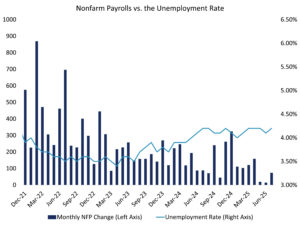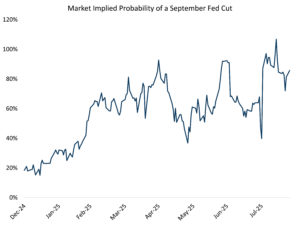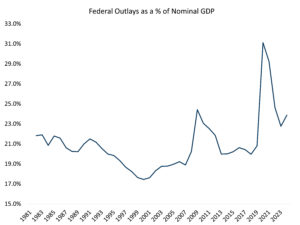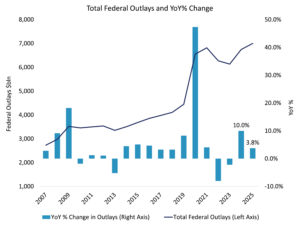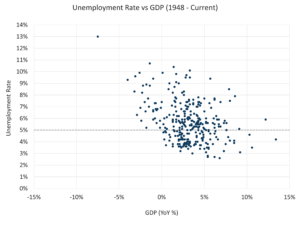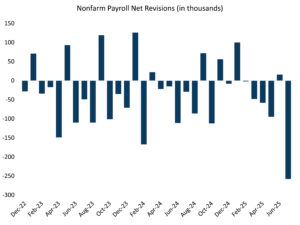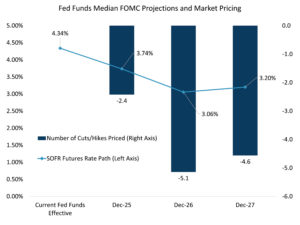The second-quarter earnings season offered a revealing snapshot of the US retail landscape. Retailers reported resilient consumer demand, driven more by pricing than volume. Comparable sales were broadly positive, with value-oriented retailers outperforming amid inflationary pressures and shifting consumer priorities.
Value retailers like WMT saw gains in both volume and pricing. Walmart (WMT) and off-price retailer TJX posted the strongest results, with comparable sales rising 4.6% and 4.0%, respectively. These value-focused retailers have consistently outperformed in a high-inflation environment, with each delivering 10 consecutive quarters of at least 3% growth. In contrast, more discretionary retailers like Target (TGT) continued to lose market share, with comparable sales declining 1.9% this quarter.
Home improvement retailers Home Depot (HD) and Lowe’s (LOW) both returned to positive comparable sales, reflecting some pent-up demand as the housing market begins to benefit from expectations of lower interest rates. A closer look at comparable sales reveals that much of the growth was driven by average ticket increases rather than higher transaction volumes. This trend was especially pronounced at HD and LOW, where:
- HD saw transactions decline 0.4%, offset by a 1.4% increase in average ticket.
- LOW experienced a 1.8% drop in transactions, countered by a 2.9% rise in ticket size.
Retailers are navigating a delicate balance — maintaining sales momentum while facing rising costs, particularly as tariff impacts begin to take hold. These impacts vary by retailer, with discretionary-heavy businesses (e.g., apparel and electronics) facing far greater tariff exposure. Tariffs are also highlighting the importance of scale and supply chain agility, both of which remain critical in mitigating cost pressures. Some retailers are destocking excess inventory purchased pre-tariff, leading to rising costs in the back half of the year. Others are experiencing upfront tariff impacts and are actively shifting supply chains away from China and other high-tariff jurisdictions while leveraging pricing strategies. WMT notably increased its inventory year-over-year in fiscal Q4 2025 and currently holds inventory 3.8% higher than the prior year. However, as WMT replenishes stock at post-tariff price levels, it is seeing weekly costs increase. Whether costs are absorbed in margin or passed on to the consumer is a question for the fourth quarter.
Tariffs are emerging as a key challenge, pressuring margins and prompting supply chain shifts, especially for retailers with heavy exposure to China. As costs rise and inventory strategies evolve, the sector faces a critical test heading into the holiday season, where agility and scale will be essential for maintaining profitability.
Disclosures: This is for informational purposes only and is not intended as investment advice or an offer or solicitation with respect to the purchase or sale of any security, strategy, or investment product. Although the statements of fact, information, charts, analysis and data in this report have been obtained from, and are based upon, sources Sage believes to be reliable, we do not guarantee their accuracy, and the underlying information, data, figures and publicly available information has not been verified or audited for accuracy or completeness by Sage. Additionally, we do not represent that the information, data, analysis, and charts are accurate or complete, and as such should not be relied upon as such. All results included in this report constitute Sage’s opinions as of the date of this report and are subject to change without notice due to various factors, such as market conditions. Investors should make their own decisions on investment strategies based on their specific investment objectives and financial circumstances. All investments contain risk and may lose value. Past performance is not a guarantee of future results.
Sage Advisory Services Ltd. Co. is a registered investment adviser that provides investment management services for a variety of institutions and high net worth individuals. For additional information on Sage and its investment management services, please view our website at www.sageadvisory.com, or refer to our Form ADV, which is available upon request by calling 512.327.5530.


